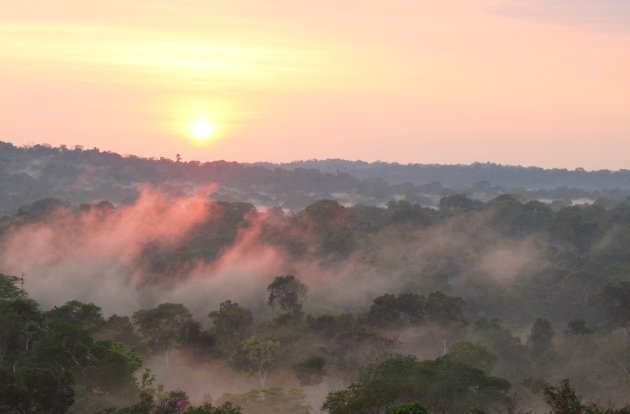
Few people can imagine (or even take seriously) the life of a birding guide at a lodge in the tropics, so I thought it would be a nice exercise to outline what an average day for me was like at Cristalino Lodge. I will not detail any negative preconceived notions of the life of a birding guide — rather just the day in and day out activities that make being a bird guide both a rewarding and demanding profession at the same time.
White-bellied Parrot was one of many target species at either of the canopy towers.
4:30AM: It is time to wake up! Time to wash up, get dressed, and meet the clients for breakfast. Between eating that granola or pointing out the traditional ‘must try’ Pao de Queijo (cheese bread made with cassava flour), I try to glean information from my clients for pertinent details such as which target species they want to see, how seriously do they want to bird, how much can they realistically walk, what are their main goals at the lodge, do they have any food allergies I need to relay to the kitchen, etc. Of course, almost none of these questions are asked directly but carefully gleaned by weaving the conversation along in a totally friendly manner, trying to make sure you have all the information necessary to make your client have an unforgettable experience at Cristalino.
5:30AM: With scope in tow, we head off about a kilometer into the forest to Canopy Tower I in the dim morning light. “Careful about the dew, it makes these metal stairs very slippery,” I warn as we head up 50m above the forest floor and look over the spectacular sight of a crimson dawn and mist rising from the Amazon Rainforest. While setting up my scope, I immediately start to call out birds. “Scarlet Macaws to the left about 300 feet out.” At first light, many of the larger canopy species commute and call from the canopy: parrots, cotingas, guans, and toucans. As my client wonders at a Bare-necked Fruitcrow or talks about his or her last great birding adventure, I remain constantly dialed in to the sounds of the forest. Is that far away beeping the call of a Ringed Woodpecker? The croaking call of a Gould’s Toucanet? The high pitched screech of White-bellied Parrot? While listening for spontaneously calling birds, I occasionally send out “shouts” with playback for highly desired specialties such as White-browed Hawk and Black-bellied Cuckoo. With every fascinating species that we see, I sprinkle in facts about its diet, taxonomic status, biogeography, or movements to add context and extra appreciation to what they are seeing. As the day warms up at around 8 or 9 AM, the canopy feeding flocks begin to move and with careful usage of Amazonian Pygmy-Owl notes and the calls of White-fronted Nunbird, a colorful assemblage of tanagers, flycatchers, hummingbirds, and furnariids (ovenbirds) streams by Canopy Tower I for good views and maybe even photographs (or not — nothing is guaranteed!).
This Black-faced Dacnis got close enough to Canopy Tower I for good photographs.
10:00AM: With the increasing heat and subsiding of bird activity, we slowly head down back in the direction of the main lodge building, watching for displaying manakins, listening for feeding flocks, and stopping for stake-out owls or Tapajos Hermit along the way all the while answering questions and talking about the forest to the clients. At the main lodge building, I invite the clients for a sit down and encourage them to get some coffee, tea, or cookies while we discuss the plans for the rest of the day and the rest of their stay. After a brief chat, I remind them about lunch being at noon, wave them off to their rooms, and head to the guiding office where I jostle for the best trails and activities for my clients with the other guides so that none of us overlap on any given date.
12:30PM: Lunch time! Time for conversation, discussion about culture, cuisine, science, or politics, and the sightings of that morning. A good chat with my clients usually lasts well after lunch has ended. I tell them to meet me at the boat landing at 3PM, and we part ways. What does a guide do in the hour or two before reconvening with the client in the afternoon? Catch up with sightings of interesting species with other guides (including the latest antswarm), process bird photography and sound recordings, research about birds or other elements in the forest, catch up with email of family and friends, blog about birding — a literally endless list of tasks to complete in the available free time. I would also take the opportunity to talk with the available boatmen regarding outings on future dates.
Boat-billed Heron is irregularly seen on boat trips on the shores of the Rio Cristalino.
3:00PM: Meeting the clients at the edge of the river, we carefully board the boat and head off on the beautiful Cristalino River — an outing which always guarantees sightings in the heat of the day, including various Amazonian swallows, kingfishers, ibis, and Sunbittern. During one trip while guiding Victor Emmanuel and Barry Lyon, we kept count and recorded well over 50 species from the river, including such highlights as Red-fan Parrot and Brown-banded Puffbird. However, there are two main targets in the early afternoon boat ride: South American Tapir and Giant Otter. During the month of September when the forest is at its driest, tapirs habitually loiter along the shores of the Cristalino River in order to cool off. Sightings can be nearly guaranteed during this brief window of the year. “The Cristalino River is a blackwater river, meaning that it is very nutrient poor with little vegetation. The color is due to tannins leached through the forest vegetation,” I explain to the clients as we work our way up the river, hopefully picking up other river edge specialties such as Silvered Antbird and Agami Heron. At around sunset, using a judgement call from my previous conversations with these clients, we either return back early to the lodge grounds or continue for a round of spotlighting in the dark and an extra bit of excitement — Zigzag Heron (the tail pumping, tree hopping mini-Kagu), Long-tailed Potoo (at a traditional snag) , Dwarf Caiman, and perhaps even a Paca (medium-sized, unusual rodent)! It is a great way to end the day with a bang.
Giant Otters are one of the most charismatic and enjoyable mammals to watch along the Cristalino River.
7:00PM: Dinner time. Having returned from our exciting nocturnal foray along the river (or using the extra time to freshen up for those that opt out), we eat dinner and discuss the sightings of the day. “So, what was your favorite bird species or best experience so far today?” I would usually ask. One of my favorite activities throughout my stay is the reliving of these amazing experiences with clients at the dinner table. They were never in short supply at Cristalino Lodge. I would always end the day with a discussion about the plans for the following day, describing the difficulty of walking, the presence of biting or stinging insects, which species we could expect to see on a particular trail, meeting time in the morning, etc. It was always important to make sure that the clients knew what to expect every day. We would then end the day with the bird checklist.
9:30-10:00PM: Somewhere between answering emails, listening to bird recordings, and filling out field notes, I fall asleep early so I can wake up about seven hours later. Such was a typical day as a birding guide at Cristalino Lodge.

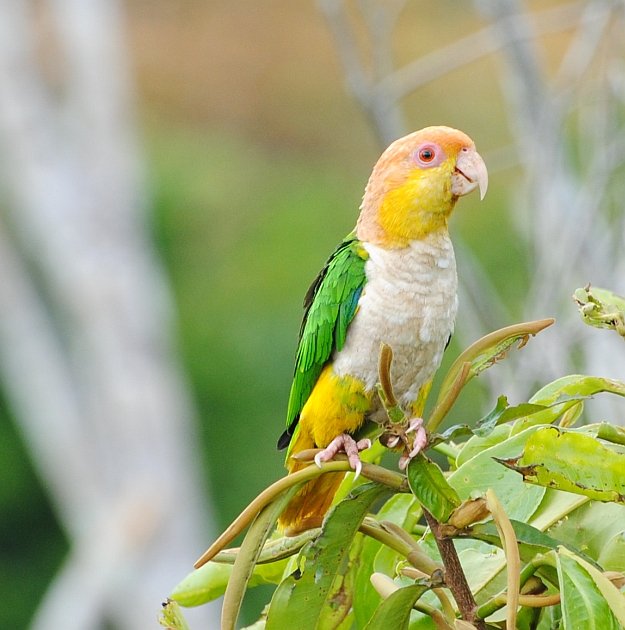
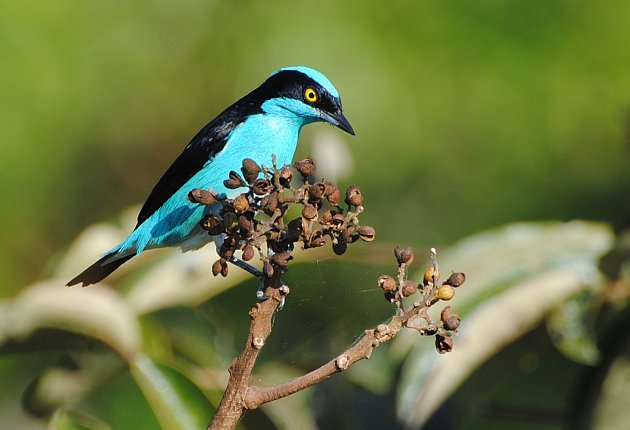
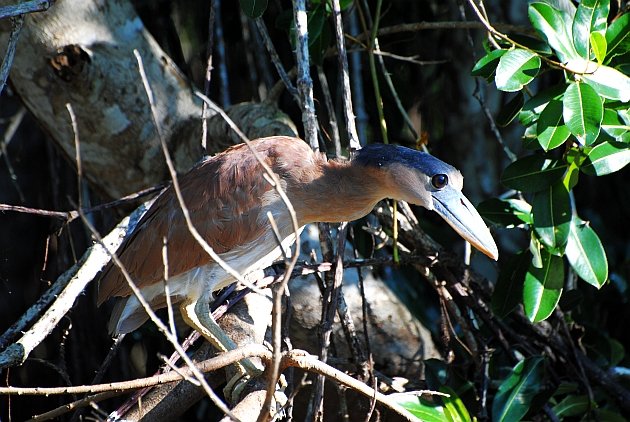
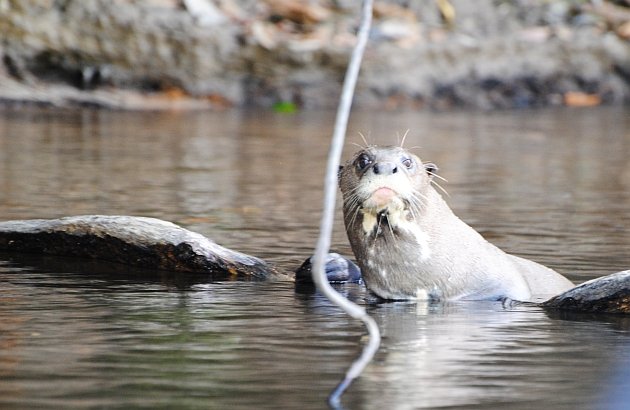










Thanks for sharing your fabulous photos with us. What an amazing parrot! Your excursions sound absolutely unreal.
I can see where I’m going next!
With such amazing birds and mammals around, how could anyone even think of taking a few hours off? What a great life.
Cristalino is so high on my list. Best month for Manakins?